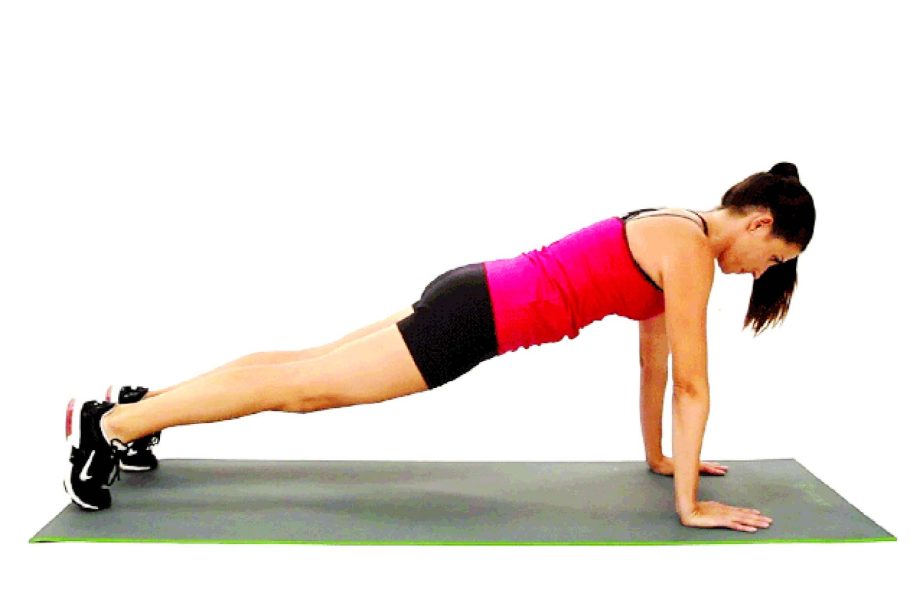
We wouldn’t disagree if you said planks are boring. Quite frankly, staring at the floor with pools of sweat running down your nose is as uninspiring as visiting a general physician.
But planks have now become the gold-standard for a balanced core workout. While the classic sit-ups and crunches haven’t fallen out of flavour yet, they tend to be hard on your back.
“What sit-ups tend to do is push your curved spine against the floor working your hip flexors. These are the muscles that trace down from the thighs to the lumbar vertebrae in our lower back. When hip flexors are too tight, they routinely tug at the lower spine, which can lead to lower back issues,” say Harvard Health experts.
Planks, on the other hand, give a better balance of muscles on the front, back and sides of the body during the activity as opposed to sit-ups which target only a few muscle groups. A plank is essentially an isometric exercise used to build endurance in the abdominals. Know that our core goes much beyond abdominals.
What do we mean by isometric?
Isometric means holding a specific position with minimal movement for a given amount of time. In case of isometric exercises, according to experts, due to lesser blood flow during prolonged tension period, there are multiple growth factors that remain in the muscle tissue for longer periods and stimulate muscle growth.
How many calories do you burn during a plank?
On an average, a person who weighs roughly 68 kilos will burn around 221 calories in an hour by doing plank, according to health and fitness website FitClick. Planks are useful also because it continues to burn calories even after your stop exercising.
“After burn,” says strength and conditioning coach Deckline Leitao, “that’s where it’s effectiveness lies as a calorie burner.”
“Also because it engages the core musculature constantly throughout the one minute unlike abdominal crunches, burpees, etc which have small breaks for the core musculature where it relaxes for a split second between reps,” added Leitao.
How is a plank performed?
Begin by getting into a push-up position. Now rest your body weight on your forearms and not your palms. At this point, your body should form a straight line from head to ankle. Clench your abdominals and hold the position for the prescribed time.
Plank is the most effective, simplest core exercise you can ever do. It gives a very solid base for your hands and legs to generate power in all lifts such as deadlifts, for instance, as well as athletics such as sprinting or throwing a basketball. The trick to doing it properly is to follow the principle of progressive overload, which means gradually increasing the volume, intensity and frequency to achieve optimum results.
How will the plank help you?
1) Recruits all major core muscle groups
It recruits all major core muscle groups such as rectus abdominus, transverse abdominus, the external oblique muscle, and the glutes. Now, if you work out the rectus abdominus, it will lead to enhanced sports performance, especially with activities that require jumping.
This particular muscle group also gives you the six-pack and is the hardest to achieve. While exercising the Transverse abdominis will greatly increase your ability to lift heavier weights, strengthening oblique muscles will improve your capacity for stable bending and twisting. Lastly, glutes will give you a strong and shapely derriere.
2) Burn more calories than other traditional core exercises
By performing a plank on a daily basis you will end up burning more calories even when you’re sedentary. Realistically, this assumes importance if we are spending most of our time on a desk job. Besides, if you make it a routine exercise before or after work it will not only provide an additional metabolic boost but also ensure it remains high all day long, even when you sleep.
3) Improved posture
This is one exercise through which you can significantly improve stable, standing posture. That’s because when you work out your core, it has a profound effect on overall balance of your shoulders, chest, back and neck.
“Also from a safety point of view while performing and for strengthening the core to reduce the load in the spine, the plank takes the lead,” says Leitao.
4) Improved overall balance
Have you ever thought why you keep hopping from one spot to the other when you’re told to stand or hold a position on one leg? That’s because your core was weak and the abdominal muscles weren’t as strong to provide the balance. Plank will not only help youa achieve that balance, it will also improve your overall performance in any kind of sporting activity.
5) Improves flexibility
One good outcome of a plank is flexibility as it stretches nearly all our posterior muscle groups such as shoulder, collar bone and shoulder blades, while also expanding the hamstrings, toes and arches of our feet. Adding a side plank can work your oblique muscles too. This will give you immense benefits when you’re hyper-extending your toes, which is quite important for supporting your overall body weight. When you perform a side plank, the external abdominal oblique is the most used muscle. This abdominal muscle runs along the side of our body. During a side plank, oblique experience more muscle activity than back muscles, which essentially means that the side plank is an endurance exercise for most. n

